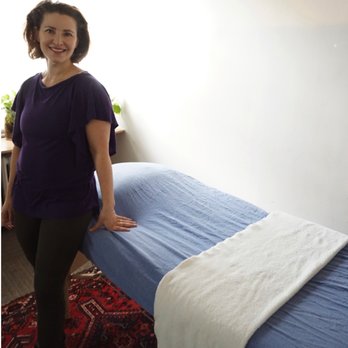
In a city that never really stops, a little stillness can feel revolutionary. japanese massage in Manhattan offers a counterbalance to transit delays, crowded sidewalks, and back-to-back meetings. The practice blends precise touch with breathing and intention, guiding you toward relief that lasts beyond the session. If you’re curious about what this therapy can do for you, you’re not alone. For some, the starting point is simply a search for japanese massage manhattan manhattan.
What makes Japanese massage distinctive
What sets this approach apart is its quiet focus on flow, posture, and breath. The client is often clothed or lightly dressed, and sessions can unfold on a mat or a low table with a calm, almost ritual rhythm. The goal isn’t a grand showcase of strength but a gentle alignment of body and awareness.
Pressure is calibrated and purposeful, applied with palms, thumbs, and sometimes fingertips to release tension along what practitioners view as energy pathways. The pace respects your breathing, inviting you to exhale fully and let muscles unwind in their own time. You’ll feel the relief as a gradual softening rather than an abrupt burst of force.
Where to find authentic sessions in Manhattan
Manhattan hosts a spectrum of studios, from minimalist spaces in the East Village to quieter rooms tucked behind storefronts in Chelsea or the Upper West Side. Seek out places that foreground traditional methods, clean sanitation, and therapists trained in Japanese techniques. A studio that concentrates on education and patient listening tends to deliver a more consistent experience.
For first-timers, it’s worth trying a shorter session to gauge comfort with the style, while regulars often opt for 60 to 90 minutes to allow the body to unwind fully. If possible, ask about the therapist’s background and the technique they’ll use so you know what to expect. A brief dialogue before the first move can make a big difference in how relaxed you feel during the session.
| Technique | Focus | Typical session |
|---|---|---|
| Shiatsu | Pressure along energy channels using palms and thumbs | 60–90 minutes, often fully clothed |
| Anma | Traditional kneading and rhythmic strokes to ease stiffness | 60 minutes |
| Seated acupressure | Upper body, shoulders, neck for quick relief | 15–30 minutes |
What to expect during your visit
Check-in is typically brief and respectful, with the practitioner asking about any health concerns, injuries, or areas to avoid. Privacy is usually built into the setup, whether you’re in a small room or a modest studio space. The aim is to create a safe, focused environment where you can relax without pressure.
During the session, you’ll often lie on a mat or table, depending on the studio’s setup and your preferences. You’ll be guided on breathing and encouraged to communicate your comfort level. If you want more or less pressure, speak up; good therapists listen and adapt in real time.
Tips for a great experience
Before you book, think about your goals: relief from desk-related tension, better circulation, or simply a mental reset after a hectic day. Clear, honest communication with the therapist helps tailor the session to your needs. Don’t hesitate to name specific areas you’d like to focus on or avoid.
Hydrate before and after, and try to arrive a few minutes early so you can settle in. If you have health conditions or injuries, share those details so the therapist can adjust the technique safely. Bring a light layer if the room runs cool and remember that quiet, undistracted time after the session can amplify the benefits.
- Communicate your pressure preference and any injuries before you start.
- Ask about the techniques used and whether you’ll be clothed or partially clothed.
- Schedule for a window of rest afterward, not immediately back-to-back commitments.
- Hydrate and avoid heavy meals right before a session.
- Respect studio rules and therapist boundaries; consent and comfort come first.
Real-life anecdotes from the city
Last winter in the East Village, I tried a 90-minute shiatsu session after weeks of commuting and computer fatigue. The room was quiet, the practitioner spoke softly, and the sequence unfolded with a patient, almost meditative pace. By the end, breathing felt lighter and the shoulder knot that had lingered for days finally loosened.
On another visit, after a long project deadline, I found a tiny studio near Union Square that specialized in traditional methods. The therapist asked about daily habits, then guided me through a deliberate sequence that left my jaw unclenched and my posture noticeably taller. It wasn’t dramatic, but the sense of grounded calm lingered well into the evening.
In a city built for speed, giving yourself space to reset isn’t indulgence; it’s practicality. A steady rhythm of mindful touch, clear breathing, and respectful hands can make Manhattan feel a little more navigable. Whether you’re new to the scene or returning to japanese massage manhattan manhattan, the right studio offers more than relaxation—it provides a reliable pause that helps you show up for the next thing. The experience can become a recurring anchor, a weekly moment to recalibrate before stepping back into the bustle.